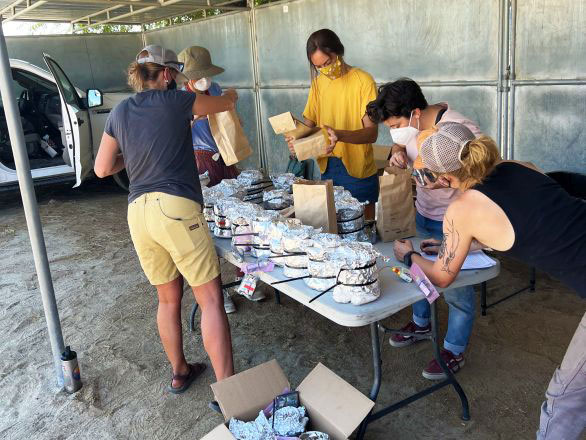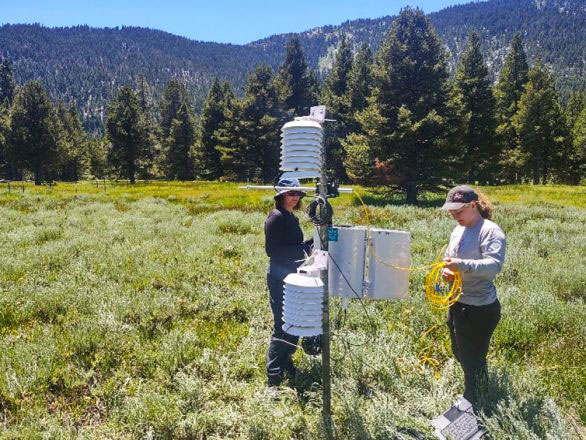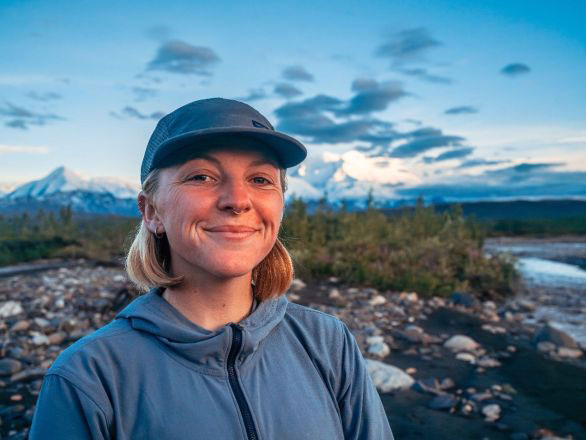Designing models to show how soil heating affects microbial processes
The Fire and Dryland Ecosystem Lab, led by Erin Hanan, associate professor of fire and ecosystem ecology, is investigating how soil heating influences soil microbial processes.
 The research is funded through a USDA NIFA grant and is being conducted in collaboration with Jessica Miesel (University of Idaho), Matt Dickinson (US Forest Service) and Indrek Whickham (Michigan State University). The team designed a novel burn table experiment to measure soil heating across a range of depths, fuel loading, parent material and soil moisture in a factorial design. This experiment was led by doctoral student Elena Cox at the University of Nevada, Reno.
The research is funded through a USDA NIFA grant and is being conducted in collaboration with Jessica Miesel (University of Idaho), Matt Dickinson (US Forest Service) and Indrek Whickham (Michigan State University). The team designed a novel burn table experiment to measure soil heating across a range of depths, fuel loading, parent material and soil moisture in a factorial design. This experiment was led by doctoral student Elena Cox at the University of Nevada, Reno.
Elena collected soils derived from two distinct parent materials in the Sierra Nevada:
- Decomposed granite soils were collected from Whittell Forest
- Andesite soils were collected from the Sagehen Experiment Forest
They filled calorimeters with soils collected from the two sites and layered duff and litter (also collected from Whittell) on the table above the calorimeters to represent moderate and high surface fuel loading. In each calorimeter, they installed temperature sensors at multiple depths. They estimated flame temperatures using temperature-sensitive paints, thermal imaging at the location of each calorimeter using an FLIR camera, and radiant energy from the surface using a radiometer. Following the burn, they estimated soil microbial biomass, respiration and extracellular enzyme activity at multiple depths in each soil profile. They are also quantifying total and exchangeable organic carbon and nitrogen, and fungal to bacterial ratios.
This research is expected to yield several publications and will contribute to advancing the Soil Heating In Fire Model (SheFire) developed in the Hanan lab in a prior project led by master’s student Mary Brady.

 In the summer of 2023, doctoral student Abbie Sandquist, master’s student Sydney Corcoran and
In the summer of 2023, doctoral student Abbie Sandquist, master’s student Sydney Corcoran and  The research is funded through a USDA NIFA grant and is being conducted in collaboration with Jessica Miesel (University of Idaho), Matt Dickinson (US Forest Service) and Indrek Whickham (Michigan State University). The team designed a novel burn table experiment to measure soil heating across a range of depths, fuel loading, parent material and soil moisture in a factorial design. This experiment was led by doctoral student Elena Cox at the University of Nevada, Reno.
The research is funded through a USDA NIFA grant and is being conducted in collaboration with Jessica Miesel (University of Idaho), Matt Dickinson (US Forest Service) and Indrek Whickham (Michigan State University). The team designed a novel burn table experiment to measure soil heating across a range of depths, fuel loading, parent material and soil moisture in a factorial design. This experiment was led by doctoral student Elena Cox at the University of Nevada, Reno. A key unknown is how the variable presence of litter alters evaporation and snowmelt rates on the forest floor. Litter can be lost due to disturbances such as fires or increased due to fuels treatments. Masticated or chipped wood is used in restoration and to dispose of residue from forestry activities, but the effects of these practices on soil-water content and forest growing conditions are understudied. In seasonally snow-covered landscapes, such as the Whittell Forest, this relationship has the potential to impact snowmelt timing and the duration of plant-available soil water.
A key unknown is how the variable presence of litter alters evaporation and snowmelt rates on the forest floor. Litter can be lost due to disturbances such as fires or increased due to fuels treatments. Masticated or chipped wood is used in restoration and to dispose of residue from forestry activities, but the effects of these practices on soil-water content and forest growing conditions are understudied. In seasonally snow-covered landscapes, such as the Whittell Forest, this relationship has the potential to impact snowmelt timing and the duration of plant-available soil water. Climate warming trends and the expected variability in the timing and intensity of precipitation in mountain regions could alter the availability of key resources like nitrogen during the winter months, with unknown effects on ecosystem energy fluxes (i.e., primary productivity [GPP] and ecosystem respiration [ER]).
Climate warming trends and the expected variability in the timing and intensity of precipitation in mountain regions could alter the availability of key resources like nitrogen during the winter months, with unknown effects on ecosystem energy fluxes (i.e., primary productivity [GPP] and ecosystem respiration [ER]).